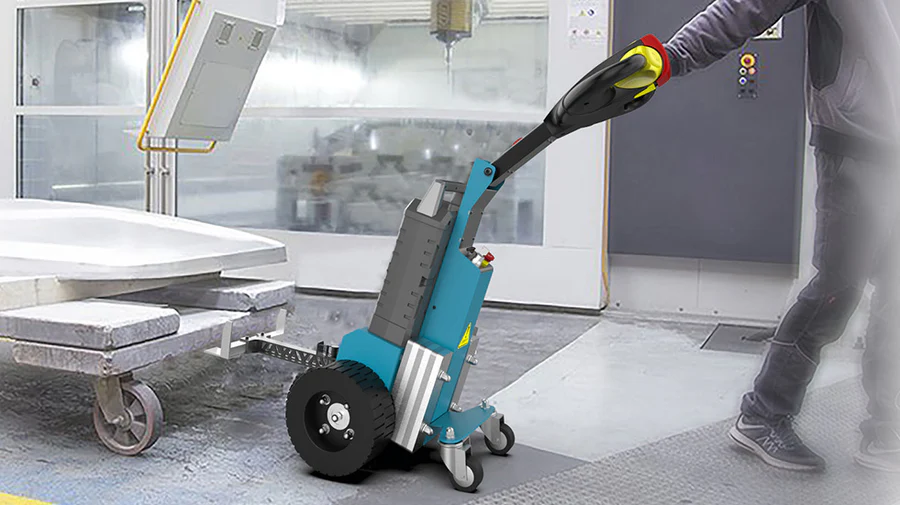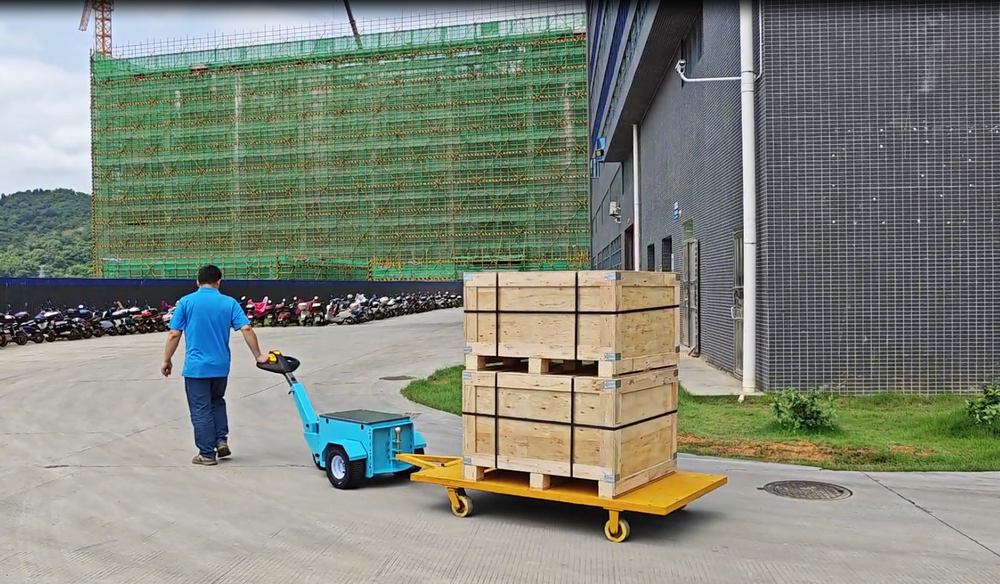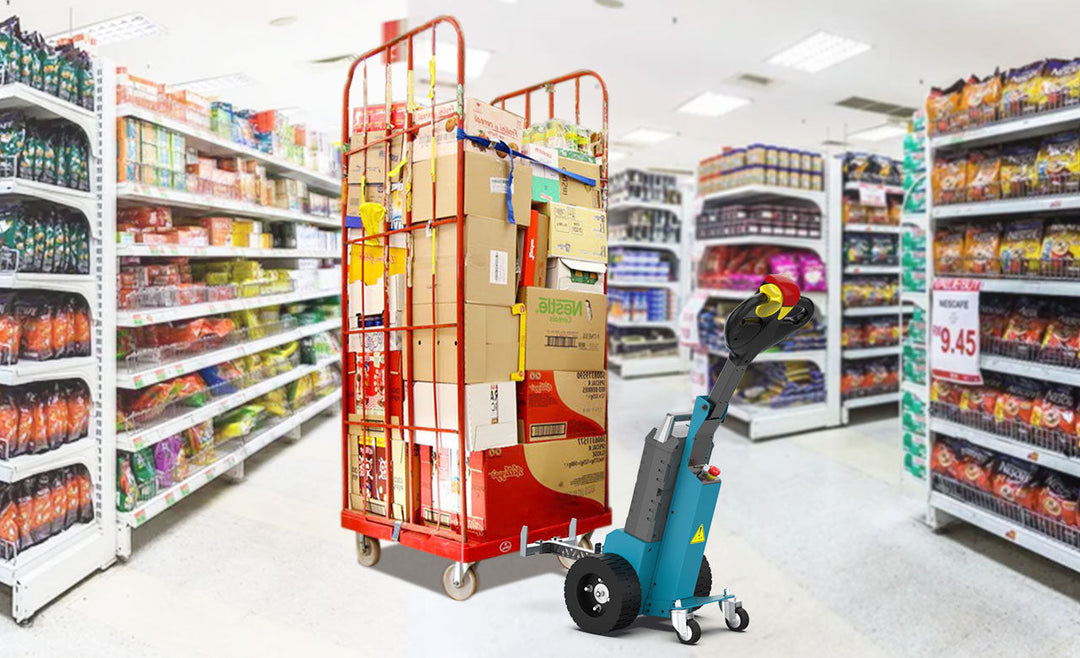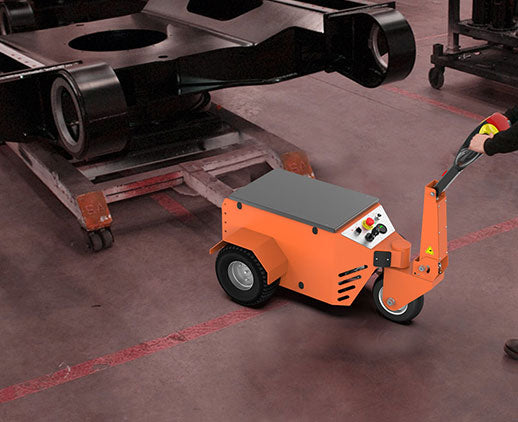What is tugging equipment

Towing equipment includes electric tugboats, hydraulic winches, offshore tugboats, etc., which are widely used in logistics, construction, aviation, mining and other industries to improve efficiency, reduce costs and improve safety.
Purpose and Function
In large logistics centers, the use of electric tuggers can improve loading and unloading efficiency by at least 30%. A 2.5 kW tugger is capable of carrying goods up to 5 tons with a speed of 10 km/h, while the procurement cost is around 50,000 yuan each. Its extensive use has saved an average of 15-20% of labor costs for the enterprises and cut workplace accidents by 25%. Learn more about boosting productivity .
In the construction industry, a hydraulic winch system is capable of providing traction force up to 100 tons, priced between 120,000 yuan and 180,000 yuan. In a certain bridge construction project, this equipment was used for lifting a 200-meter steel beam and saved 40% of the time to shorten the period of construction to 10 months. Hydraulic towing systems normally enjoy a service life of over 10 years, with maintenance costs amounting to only 5%-8% of the total investment.
In the aviation industry, such a tugger with 50 tons traction power will be sold for between 1 million and 1.5 million yuan. A single flight reduces delay time by about 300 hours per year. Efficiency improvements in ground tugger operations could save around $1.2 billion in operation costs annually and reduce emission by 80% compared with traditional fuel tuggers.

Types of Equipment
The first type is electric tuggers, mainly used for transporting goods and towing pallets. For example, a 3 kW electric tugger available on the market has a load capacity of up to 6 tons and a maximum operating speed of 12 km/h. These devices are typically priced between 40,000 yuan and 70,000 yuan, with annual maintenance costs accounting for about 3%-5% of the purchase cost. On average, electric tuggers raise freight handling efficiency by 25% and decrease labor demand by 35%. Learn more about tugger speed .
The second category is hydraulic winches, extensively applied in industries such as construction and mining. With a traction capacity of 100 tons and a length of up to 500 meters, the rope is estimated to be around 150,000 yuan. In the transport of large equipment weighing 80 tons to poor working face sites, one large-scale mining project successfully saved 50% of its construction time by reducing transportation cost by about 20%.
Thirdly, it provides aviation towing, which is necessary for the tow and positioning of aircraft in all types of airport circumstances. It is an electric aircraft tug with a maximum traction capacity of 75 tons, selling between 1.2 million and 1.5 million yuan. The environment performance includes saving 10 kWh per hour, greatly reducing the operational cost by up to 70% when benchmarked against traditional fuel-powered tugs. Such equipment contributes to a 30% increase in the ground handling efficiency and a reduction of 150,000 tons of carbon dioxide emission in the airports of the world.
Fourth is the tugging equipment for sea transportation in the ports and oceans. A modern tugboat can provide more than 100 tons towing capacity with advanced GPS positioning and automated control system; one vessel costs from 8 million to 12 million yuan. In a pilot at one port, the tug was able to cut in half the time to dock each large cargo vessel from 10 hours to 7, boosting annual cargo throughput by 18%.
The fifth type is industrial chain tugging equipment, which is widely used in automated factory production lines. An industrial chain tugging system costs about 30,000 yuan at the low end, and maintenance costs are about 2% of the annual total investment. It can improve production line efficiency by 15%-20% and reduce material waste by about 10%.
Load Capacity
Logistics can sometimes have small electric tuggers with a 1-3 ton load capacity used in logistics, which will be appropriate to move pallets or lightweight goods. Now, take as an example the 2 tons of load tuggers: 1.8 meters in length, 0.8 meters in width, priced about 30,000 yuan, and can increase single-load transportation efficiency by up to 50%, with increased handling of items from 300 to 450 in one day, resulting in 33% in terms of comprehensive working efficiency. Explore more about load handling solutions .
In the construction industry, hydraulic winches have a load capacity of 10 to 120 tons. A winch intended for transportation of large steel materials has a maximum traction capacity of 100 tons with a steel rope diameter of 50 mm and a length of 200 meters. Prices stand at around 150,000 to 200,000 yuan, this set of equipment was used in a major bridge construction project to install the 80-ton steel beam and reduced construction time by 20 days, or shortening 8% in total cycle of construction.
For example, in the aviation industry, the empty weight of a Boeing 747 is 183 tons, which needs an aircraft tugger with a traction capacity of 200 tons. The price of this kind of equipment is usually higher than 2 million yuan, equipped with high-strength towing hooks and intelligent control systems. These devices cut airport ground handling time by up to 30%, saving as much as 5 million yuan in annual operational costs at airports.
A tugboat with a towing capacity of up to 150 tons is used for pulling heavy cargo ships or offshore platforms. In a certain marine engineering project, the transport of a 5,000-ton offshore drilling platform by a tugboat reached the site within 48 hours and had spent about 8 million yuan in total. This equipment increases the cargo throughput of the ports by about 20% every year.
Industries Utilizing Tugging Equipment
In the logistics industry, cargo handling and warehouse management use tugging equipment. The average price of a 5-ton-load-capacity tugger is 50,000 yuan, which can reach as high as 10 km/h. It will be able to apply to warehouses and distribution centers, saving operational costs by about 20%. After the introduction of tugging equipment, daily order processing in warehouses rose from 15,000 to 20,000 items of goods, while the overall work efficiency increased by 33%. The annual investment is about 1,500 yuan per unit. Learn more about material handling .
The construction industry is another major area of application for tugging equipment, used in handling heavy materials and machinery. A hydraulic winch with a traction capacity of 100 tons is priced between 120,000 yuan and 180,000 yuan. In a major bridge construction project, the winch installed 200-meter-long steel beams weighing 60 tons and saved 15% in construction time and reduced the total costs of the project by 10%. The construction industry is developing very fast, and demand for hydraulic towing is increasing at a rate of 7% every year.
In the aeronautic industries, usually airports deploy the services of a tugger to relocate aircraft from the parking lot to a runway or hangar. A modern electric aircraft tugger with traction capacity of 75 tons costs between 1 million to 1.5 million yuan. Such tuggers reduce ground operation time by use by about 25%, and can lower the cost of ground handling per aircraft by 10%-15%. The annual cost savings for every operation exceed more than 10 million yuan; carbon emissions decrease by about 30%, conformed to the goal of green operation.
Water transport: the docking of over 100 tons class large cargo ships and offshore platform towing relies on large tugs. A single modern tug, which costs 8 million yuan, independently completes over 300 port operations annually, saving 40% of the time it takes to dock ships, from 10 hours down to 6 hours. It raises the cargo throughput in ports by 15-20%, creating several million yuan more in economic benefits every year.
Mining tugger for load up to 120 tons is able to perform transportation on the complex terrains at 20 km/h. One device costs around 3 million yuan. The usage of this kind of machinery increased the ore transport efficiency in a certain mining project by 50%, monthly ore transport volumes from 500,000 to 750,000 tons, while the total revenues grew 30%+ accordingly. The accident rate dropped by around 40%.

Customization and Adaptability
Logistics can be equipped with the right size according to the storage environment in the warehouse, whose traction capacity can be from 1 to 10 tons. A large e-commerce enterprise once customized a batch of small electric tuggers at its logistics center and reduced the width from the standard 1 meter to 0.8 meters. This directly improved the efficiency of warehouse operation by 20% and saved about 2 million yuan labor costs each year. Learn more about equipment lifespan .
In the construction industry, hydraulic winches have rope lengths and traction capacities adjusted to fit construction needs. A hydraulic winch was used for high-rise construction and was customized to have a 300-meter-long steel rope with a maximum traction capacity of 150 tons. This equipment has shortened the time for hoisting large steel beams by 25%, thus shortening the whole construction period by two months and saving about 10 million yuan in the project cost.
The aircraft tuggers developed for the aviation industry are equipped with an adjustable towing hook system that enables them to handle any aircraft—from a small business jet to high-end passenger planes. A B-737 and A-320 specific tugger is designed with electrically controlled, multi-functional tow hook adjustments in height as well as angle. The multiple functions offered make it possible for airlines to economize on equipment procurement by about 30%.
In modern times, most tugboats are designed to adapt to the different port environments with intelligent navigation and automatic positioning. A 150-ton towing capacity smart tugboat is designed with customized functions such as an automatic docking system and dynamic load distribution technology. These raise the efficiency of cargo handling in the ports by 15% and reduce energy consumption during the docking operation, saving more than 5 million yuan every year in operational costs.
A mining tugger, in the mining industry, was reformed into either a four-wheel or six-wheel-drive system with different capacities between 50-200 tons with anti-slip tires; besides, an automatic gradient control system allows it to securely perform ore transport in inclined grounds over a 30-degree angle. Such improvement increases the ore transport efficiency by 40%, and mechanical failure during transportation reduces about 25% in that time.
Towing equipment includes electric tugboats, hydraulic winches, offshore tugboats, etc., which are widely used in logistics, construction, aviation, mining and other industries to improve efficiency, reduce costs and improve safety.







